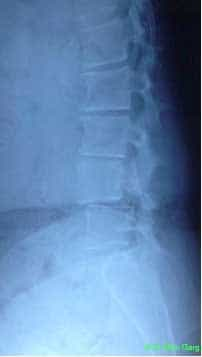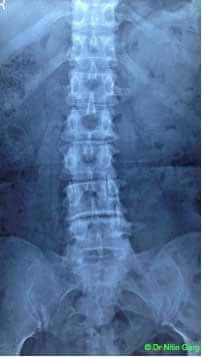Spondylolisthesis results in neurological symptoms due to instability and canal and lateral recess stenosis.
Surgical treatment consists of decompression and fusion. Various fusion methods have been described such as intertransverse fusion, PLIF and TLIF.
Key-hole methods can be used to TLIF. Bilateral decompression and fusion alongwith fixation is achieved using Minimally invasive methods. Tubular access channels are used for exposing the level of interest. This tube can be manipulated in supero-inferior and medio-lateral direction to achieve upto 2 level decompression and unilateral as well as bilateral decompression through the same one sided incision.
This patient had L4-5 degenerative spondylolisthesis with significant ligamentum flavum and facetal hypertrophy causing bilateral lateral recess stenosis. He also had coronal mal-alignment with tilt at L3-4 level. This was exagerrated after inserting the graft at L4-5 following decision to incorporate L3-4 in the construct was also taken. This was done through the same incision by using the X-tube which was manipulated upwards. Post-op CT scan shows the limited amount of bony removal. This is the benefit of Minimally Invasive method for performing MIS TLIF.



.jpg)
.jpg)
.jpg)
.jpg)